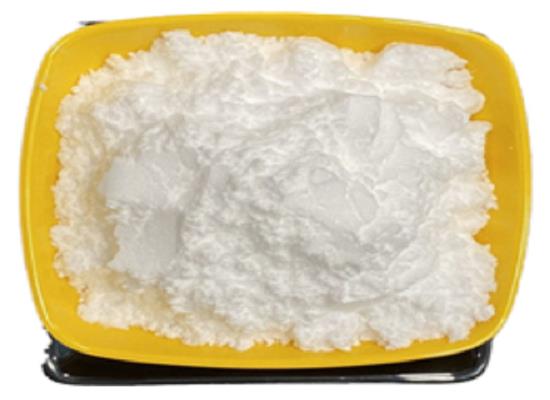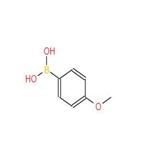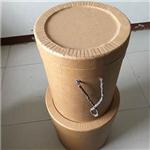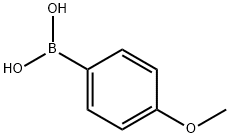4-Methoxyphenylboronic acid: applications in different fields and safety
Oct 11,2023
General Description
4-Methoxyphenylboronic acid has diverse applications in different fields. One application is its use as an electrochemical redox probe for the selective detection of hydrogen peroxide (H2O2) in live cells. Another application is in the chemical vapor deposition (CVD) of graphene with in-situ phosphorous or boron doping. By introducing 4-Methoxyphenylboronic acid during the growth of graphene, doped graphene with modified properties can be produced. Furthermore, 4-Methoxyphenylboronic acid plays a crucial role in the Meyer-Schuster rearrangement reaction, which is utilized for the synthesis of enones from propargylic alcohols. However, it is important to consider safety when handling 4-Methoxyphenylboronic acid. It may cause respiratory irritation and serious eye irritation. In summary, 4-Methoxyphenylboronic acid has promising applications in electrochemical sensing, graphene synthesis, and organic reactions.

Figure 1. 4-Methoxyphenylboronic acid
Applications in different fields
Electrochemical redox probe
4-Methoxyphenylboronic acid is a novel turn-on latent electrochemical redox probe that has been developed for the selective detection of hydrogen peroxide (H2O2) in live cells. H2O2 is known to play an important role in human cell physiology, and its tracking and quantification in physiological systems are crucial for understanding cellular changes related to neoplastic conditions and redox homeostasis. The electrochemical probe consists of a latent electrochemical reporter called 4-methoxy phenol, which is equipped with a recognition unit known as boronic acid pinacol ester for H2O2 sensing. Upon interaction with H2O2, the probe undergoes a selective analyte-triggered chemical transformation, releasing the free electrochemical reporter, 4-MP. This innovative combination of the electrochemical molecular probe strategy with electrocatalytic signal amplification technique enables highly sensitive and trace-level sensing of H2O2. The performance of the 4-MPBP latent probe coupled with the electrocatalytic signal amplification strategy is demonstrated in real-time in vivo monitoring of endogenously produced H2O2 in Caco-2 and MCF-7 cells. Overall, the application of 4-Methoxyphenylboronic acid in this study offers a promising platform for the accurate and sensitive detection of H2O2 in live cells, contributing to the understanding of cellular physiology and pathological conditions. 1
Chemical vapor deposition
4-Methoxyphenylboronic acid has been utilized in the simultaneous chemical vapor deposition (CVD) of graphene with "in-situ" phosphorous or boron doping. This process was achieved by introducing Triphenylphosphine (TPP) and 4-MPBA molecules during the growth of graphene using CH4 molecules at atmospheric pressure. During the CVD process, TPP and 4-MPBA molecules sublimated and were supplied alongside CH4. The resulting graphene samples were analyzed using Raman spectroscopy, which confirmed the successful growth of doped graphene. Auger electron spectroscopy further validated the presence of phosphorous and boron in the doped graphene. This method offers a convenient and rapid approach to produce large-area graphene with modified properties through the incorporation of solid-source molecule precursors. By utilizing 4-MPBA in the CVD process, it becomes possible to achieve phosphorous and boron doping, which can enhance the performance and characteristics of graphene for various applications. In conclusion, the application of 4-Methoxyphenylboronic acid in the CVD synthesis of doped graphene provides a straightforward and efficient pathway to produce modified graphene materials with controlled doping, offering opportunities for advancements in electronic devices, energy storage, and other fields. 2
Meyer-Schuster rearrangement reaction
4-Methoxyphenylboronic acid plays a crucial role in the application of the Meyer-Schuster rearrangement reaction. This reaction is utilized for the synthesis of enones from primary, secondary, and tertiary propargylic alcohols at room temperature. The presence of a gold(I) catalyst and small amounts of MeOH or 4-methoxyphenylboronic acid are necessary for this transformation. The versatility of this reaction is demonstrated by its successful application in the synthesis of natural products such as isoegomaketone and daphenone. Additionally, the one-pot procedure allows for the combination of the primary propargylic alcohol rearrangement with nucleophilic additions, yielding β-aryl, β-alkoxy, β-amino, or β-sulfido ketones. It is worth mentioning that propargylic alcohols containing an adjacent electron-rich aryl group can undergo silver-catalyzed substitutions with oxygen, nitrogen, and carbon nucleophiles. This unexpected observation initially arose due to the contamination of gold catalysts with trace amounts of silver salts. 3
Safety
4-Methoxyphenylboronic acid poses certain safety concerns. It may cause respiratory irritation and serious eye irritation. To ensure safety, it is advised to avoid inhaling the dust, fumes, gases, mists, vapors, or spray of the compound. In case of skin contact, it is recommended to wash the affected area thoroughly with plenty of soap and water. If the compound comes into contact with the eyes, it is important to rinse cautiously with water for several minutes. If contact lenses are being worn, they should be removed if possible and easy to do so. 4
Reference
1. Manibalan K, Han S, Zheng Y, Li H, Lin JM. Latent Redox Reporter of 4-Methoxyphenol as Electrochemical Signal Proxy for Real-Time Profiling of Endogenous H2O2 in Living Cells. ACS Sens. 2019 Sep 27;4(9):2450-2457.
2. Mekan Ovezmyradov, Magedov IV, Frolova LV, Chandler G, Garcia J, Bethke D, Shaner EA, Kalugin NG. Chemical Vapor Deposition of Phosphorous- and Boron-Doped Graphene Using Phenyl-Containing Molecules. J Nanosci Nanotechnol. 2015 Jul;15(7):4883-4886.
3. Pennell MN, Turner PG, Sheppard TD. Gold- and silver-catalyzed reactions of propargylic alcohols in the presence of protic additives. Chemistry. 2012 Apr 10;18(15):4748-4758.
4. SAFETY DATA SHEET: 4-Methoxyphenylboronic acid. Thermo Fisher SCIENTIFIC, 2010.
- Related articles
- Related Qustion
- The uses of 4-Methoxyphenylboronic acid Jan 2, 2020
4-Methoxyphenylboronic acid is a reagent used in the preparation of various biological inhibitors.
Centella asiatica extract is a potent ingredient often added to skin care that has moisturizing and anti-inflammatory properties.....
Oct 10,2023Biochemical EngineeringDabigatran etexilate offers favorable clinical outcomes and a manageable safety profile for treating and preventing venous thromboembolism in pediatric patients.....
Oct 11,2023API4-Methoxyphenylboronic acid
5720-07-0You may like
4-Methoxyphenylboronic acid manufacturers
- 4-Methoxyphenylboronic acid
-

- $30.00/ Kg
- 2022-09-28
- CAS:5720-09-0
- Min. Order: 1Kg
- Purity: 99.0% up
- Supply Ability: 50 tons per month
- 4-Methoxyphenylboronic acid
-

- $1.00 / 25kg
- 2022-05-27
- CAS:5720-07-0
- Min. Order: 0.1kg
- Purity: 99%
- Supply Ability: Ex-20tons per months
- 4-Methoxyphenyl boro
-

- $5.90 / 1KG
- 2021-11-15
- CAS:5720-07-0
- Min. Order: 1KG
- Purity: 99%
- Supply Ability: 500ton/Month




